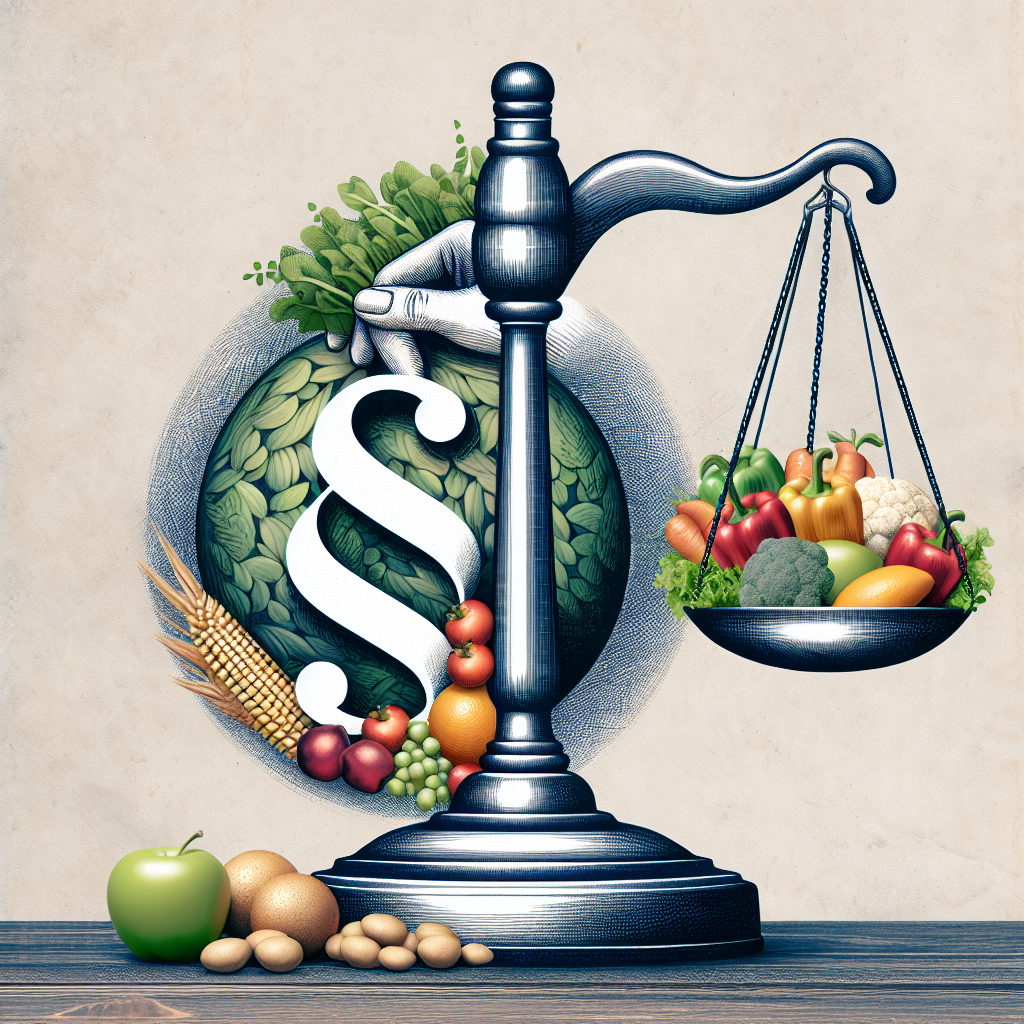On November 7, 2023, the Trump administration sought intervention from the Supreme Court regarding a ruling from a federal judge in Rhode Island. The ruling mandated that the government disburse $4 billion to fully fund the Supplemental Nutritional Assistance Program (SNAP) for the month of November. This unprecedented order raised significant concerns about the separation of powers, as articulated by U.S. Solicitor General D. John Sauer.
Background of the SNAP Funding Crisis
The Supplemental Nutritional Assistance Program, commonly referred to as SNAP, is a crucial federal initiative designed to provide food assistance to low-income individuals and families. Funding for SNAP is typically allocated by Congress during its annual appropriations process. While the program was fully funded through September 30, 2025, there has been no appropriation for the 2026 fiscal year, resulting in a funding lapse.
On October 24, the U.S. Department of Agriculture announced a suspension of benefits for November due to the ongoing government shutdown, which lasted 38 days. This decision prompted a coalition of nonprofit organizations and municipalities to file a lawsuit in Rhode Island, arguing that the suspension violated federal laws governing administrative agencies. They sought relief from U.S. District Judge John J. McConnell, Jr., who ultimately ruled in favor of the plaintiffs.
Judge McConnell’s Ruling and Its Implications
Judge McConnell provided the Trump administration with a choice: either make partial payments from emergency funds or fully fund the November benefits using alternative sources. The administration opted for the former, but on Thursday, McConnell ordered the government to fully comply with the ruling by funding the November benefits entirely. This decision has significant implications for both SNAP recipients and the broader context of federal funding.
Sauer’s appeal to the Supreme Court emphasized that the funding crisis was a result of congressional inaction, stating that it could only be resolved through legislative measures. He requested an administrative stay to temporarily halt the lower court’s ruling, thereby allowing the Supreme Court adequate time to consider the request. This legal maneuver underscores the tension between the executive and judicial branches regarding the management of federal funds.
Legal and Political Ramifications
The case highlights critical issues surrounding the federal budget and the responsibilities of various branches of government. As the government shutdown continues, the implications for SNAP funding are particularly urgent. Many individuals and families rely on SNAP benefits for their daily sustenance, and any disruption in funding could lead to dire consequences.
Furthermore, the situation raises questions about the role of the judiciary in enforcing federal laws related to administrative agencies. The ruling by Judge McConnell could set a precedent for future cases involving the funding of federal programs during times of governmental impasse. As the Supreme Court deliberates on this matter, it is essential to consider both the legal and humanitarian aspects of the case.
- supreme court snap funding issues are at the forefront of this legal battle.
- The implications of the ruling extend beyond SNAP, touching upon broader themes of governance and accountability.
As the situation develops, stakeholders will be closely monitoring the Supreme Court’s response to the administration’s request. The outcome could have lasting effects on federal food assistance programs and the mechanisms through which they are funded.

The recent developments surrounding the Supplemental Nutrition Assistance Program (SNAP) and its November payments have drawn significant attention, particularly following a ruling by a federal judge. The complexities of funding and the interplay between federal and state authorities have raised questions about the ongoing legislative process, especially given the current political climate. As the situation unfolds, the implications for millions of Americans who rely on these benefits remain a pressing concern.
Supreme Court’s Intervention in SNAP Funding
On November 7, the Supreme Court temporarily paused a federal judge’s ruling requiring the government to allocate $4 billion for SNAP benefits in November. This ruling by U.S. District Judge John J. McConnell, Jr. was characterized by U.S. Solicitor General D. John Sauer as an “unprecedented” order that undermines the principle of separation of powers. Sauer highlighted the ongoing funding crisis, exacerbated by a prolonged government shutdown, which has left the program in a precarious position. He emphasized that the resolution of this crisis lies within the purview of Congress, rather than through judicial mandates.
In his request, Sauer sought an administrative stay from the Supreme Court, effectively asking the justices to delay the implementation of McConnell’s ruling to allow time for further review. This legal maneuver underscores the contentious nature of the funding debate and the significant impact it has on the SNAP program, which was previously funded through September 30, 2025. However, the absence of appropriations for the 2026 fiscal year has left the program vulnerable to lapses in funding.
Background on SNAP Funding Issues
The SNAP program, essential for millions of low-income families, was fully funded until the end of the 2025 fiscal year. However, the recent government shutdown has led to a suspension of benefits for November, prompting legal actions from various nonprofits and municipalities. They contended that this suspension violated federal laws governing administrative agencies, which necessitated a judicial response. The plaintiffs sought to compel the government to utilize emergency funds to ensure the continuation of benefits during this critical period.
Judge McConnell’s initial ruling presented the Trump administration with two options: either make partial payments from emergency funds or fully fund the November benefits via alternative sources. The administration opted for partial payments, but the judge later mandated that the full amount be disbursed by the following day. This order, however, faced immediate appeal from the Trump administration, which has now reached the Supreme Court for further deliberation.
The implications of this legal battle extend beyond immediate funding concerns, as they highlight the intricate relationship between legislative action and judicial authority. The Supreme Court’s eventual decision will not only affect SNAP recipients but may also set a precedent for future interactions between state and federal powers. Understanding the judicial landscape surrounding such cases is vital, and ongoing supreme court updates will provide clarity on the evolving situation.

The Broader Impact of the Ruling
The Supreme Court’s temporary pause on the ruling has significant ramifications for SNAP beneficiaries, who depend on timely assistance for food security. The funding crisis has already created uncertainty for many families, and the judicial proceedings further complicate an already fragile situation. As the government navigates its fiscal responsibilities, the role of the courts in enforcing or challenging these obligations will likely remain a contentious issue.
Moreover, the Trump administration’s stance on this matter reflects broader themes in governance, particularly regarding how crises are managed and the extent to which judicial intervention is appropriate. The complexities surrounding SNAP funding illustrate the challenges faced by federal agencies in fulfilling their mandates amidst political and operational hurdles. For those interested in the judicial processes involved, examining the supreme court oral arguments can provide valuable insights into the legal reasoning that may shape future outcomes.
As the situation continues to evolve, the need for effective communication among stakeholders, including lawmakers, judicial authorities, and advocacy groups, remains paramount. The ongoing discussions around SNAP funding highlight the critical interplay between legislative intent and judicial interpretation, which ultimately impacts the lives of millions across the nation. The resolution of this case will not only determine the fate of November’s SNAP payments but also influence the future of food assistance programs in the United States.
The recent legal developments surrounding the Supplemental Nutrition Assistance Program (SNAP) have drawn significant attention, particularly as the Supreme Court has intervened to temporarily pause a ruling that mandates the government to fully fund SNAP benefits for November. This situation arose from a combination of a government shutdown and ongoing funding issues, leading to a complex interplay between judicial authority and executive action. The implications of this case extend beyond immediate financial concerns, highlighting the broader challenges within federal funding mechanisms and administrative law.
Background of the SNAP Funding Crisis
The SNAP program, which provides essential food assistance to millions of Americans, faced a critical funding gap due to a lapse in appropriations for the upcoming fiscal year. U.S. District Judge John J. McConnell, Jr. issued a ruling that required the government to allocate $4 billion to ensure that the November benefits could be distributed. This unprecedented order has sparked debates about the separation of powers, as U.S. Solicitor General D. John Sauer argued that the ruling undermines congressional authority. He emphasized that the funding crisis was a consequence of congressional inaction, asserting that solutions must originate from legislative processes rather than judicial mandates.
As the government shutdown extended for 38 days, the U.S. Department of Agriculture announced the suspension of SNAP benefits for November, prompting immediate legal action from a coalition of nonprofits and cities. They contended that halting benefits was a violation of federal law, which governs the operations of administrative agencies. The urgency of the situation was underscored by the potential impact on vulnerable populations relying on these benefits for basic sustenance.

Legal Proceedings and Court Decisions
In response to the ruling from Judge McConnell, the Trump administration sought to challenge the decision by requesting an administrative stay from the Supreme Court. This request aimed to temporarily halt the enforcement of the ruling while the administration formulated its legal arguments. The Solicitor General’s appeal highlighted the complexities of the situation, as he acknowledged the crisis but argued that it was a product of legislative failure rather than an issue that could be resolved through judicial intervention.
Initially, Judge McConnell had presented the Trump administration with two options: either make partial payments from emergency funds or fully fund the November benefits using alternative sources. The administration opted for the former, but subsequent developments led to a more stringent requirement from the court to ensure that full benefits were provided. This back-and-forth reflects the ongoing tensions between the executive branch and the judiciary, particularly in matters of budgetary control and emergency funding.
Implications for Future SNAP Funding
The Supreme Court’s decision to pause the ruling has significant implications for the future of SNAP funding and the legislative process. As Congress grapples with budgetary constraints and political divisions, the resolution of this crisis may depend on a renewed commitment to bipartisan cooperation. The SNAP program, which is crucial for food security, faces ongoing uncertainty as lawmakers must navigate the complexities of appropriations and emergency funding.
Moreover, the legal precedents set by this case could influence future disputes over administrative authority and funding mechanisms. As stakeholders await further developments, the situation underscores the necessity for clear legislative frameworks to address funding crises effectively. The interplay between judicial rulings and legislative action will continue to shape the landscape of federal assistance programs, emphasizing the importance of collaboration among branches of government.
For more insights on judicial challenges and their implications, you can explore court challenges to executive actions.